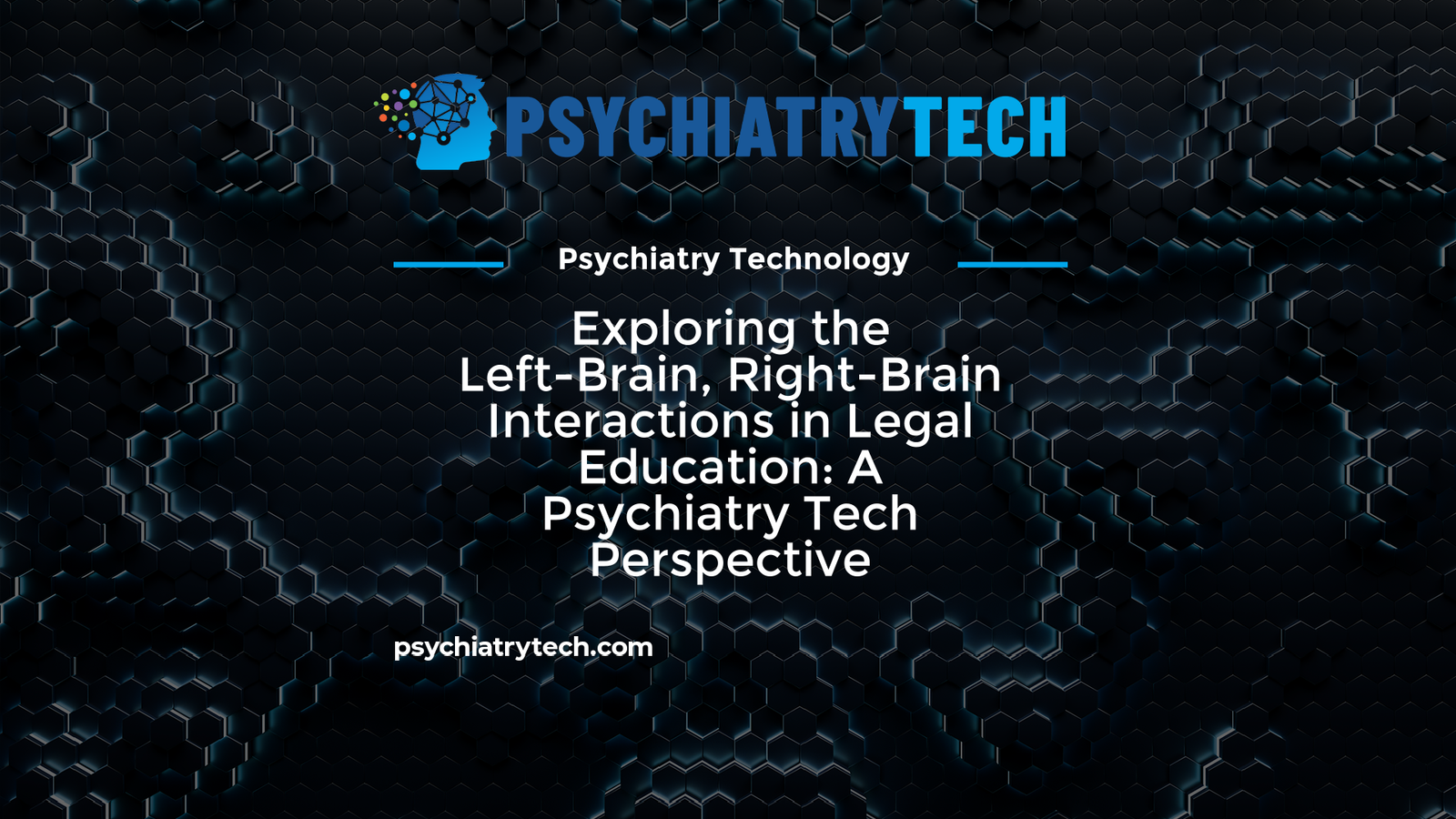Exploring the Left-Brain, Right-Brain Interactions in Legal Education: A Psychiatry Tech Perspective
It is a well-known fact that the human brain is divided into two hemispheres, the left and right, and each hemisphere has its dominant functions. The left hemisphere is usually associated with logic, language, and analytical thinking, while the right hemisphere is associated with creativity and emotional processing.
The distinction between the two hemispheres has been a topic of interest for decades. However, recent studies have shown that the left-brain and right-brain interactions may be more complex than previously thought. In fact, the interaction between the two hemispheres is vital to our success in many areas of life, including legal education.

Discover The World's MOST COMPREHENSIVE Mental Health Assessment Platform
Efficiently assess your patients for 80+ possible conditions with a single dynamic, intuitive mental health assessment. As low as $12 per patient per year.
Left-Brain, Right-Brain Interactions in Legal Education
Legal education requires a balance between analytical thinking and creativity. While the left hemisphere is crucial for logical reasoning, analysis, and critical thinking, the right hemisphere is vital for creativity, empathy, and interpersonal understanding.
Recent research has shown that legal education programs that emphasize both academic and experiential learning can help students develop such a balance. Experiential learning and simulation exercises can help students to better integrate the cognitive functions of both hemispheres, leading to better outcomes in legal practice.
Technology and Left-Brain, Right-Brain Interactions
Technology has been a game-changer in legal education, offering new ways to engage students with different learning styles while providing better access to legal information. Technology can also help to foster an integrated left-brain, right-brain perspective in legal education.
Various technology applications, such as virtual reality and artificial intelligence, can be used to offer experiential learning and simulation exercises, enabling students to engage both hemispheres in legal problem-solving. For example, students can use artificial intelligence to support legal reasoning, and virtual reality simulations can be used to improve legal communication skills.
Conclusion
Legal education faces many challenges, and fostering an integrated left-brain, right-brain perspective is an essential aspect of this. Innovative technology applications, such as simulation exercises, virtual reality, and artificial intelligence, provide new ways to engage learners and promote improved outcomes in legal practice.
At Psychiatry Tech, we are dedicated to exploring how technology can improve mental health and well-being. We believe that technology can also play a vital role in legal education, enabling students to develop a well-balanced perspective and achieve success in the future.
Reader’s Question:
What other areas of life could be positively impacted by left-brain, right-brain integration facilitated by technological advancements?
Thank you for reading and please share our post with your friends and colleagues in the mental health and legal education communities!

